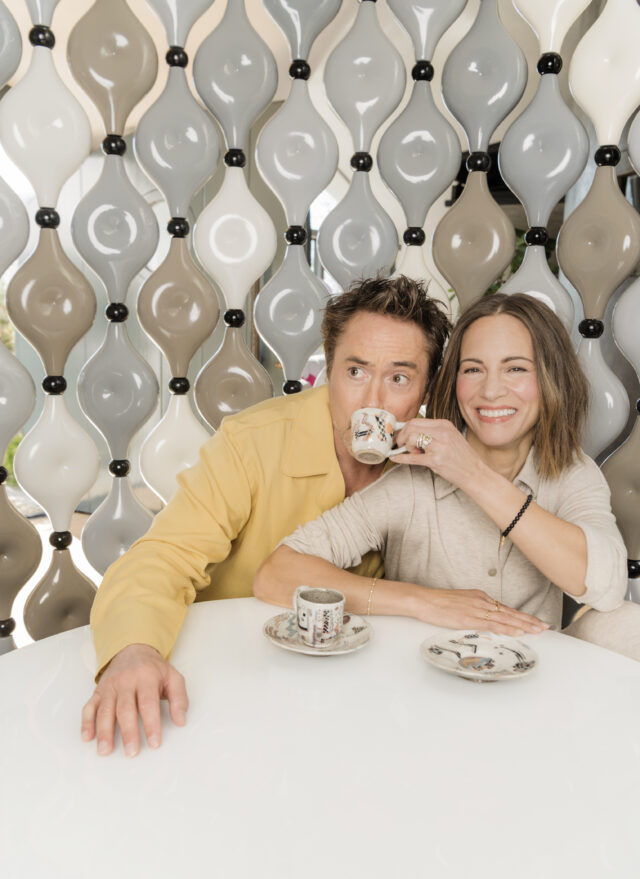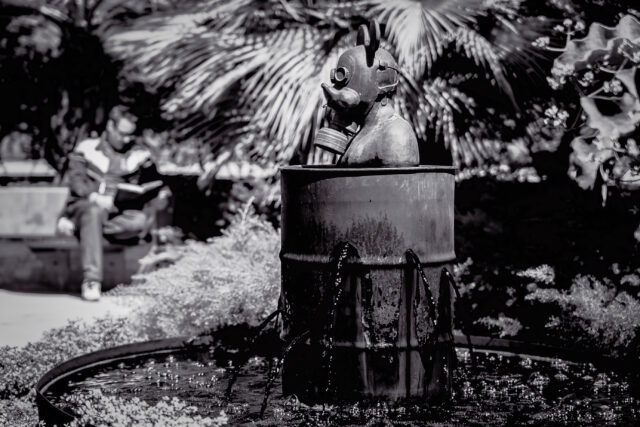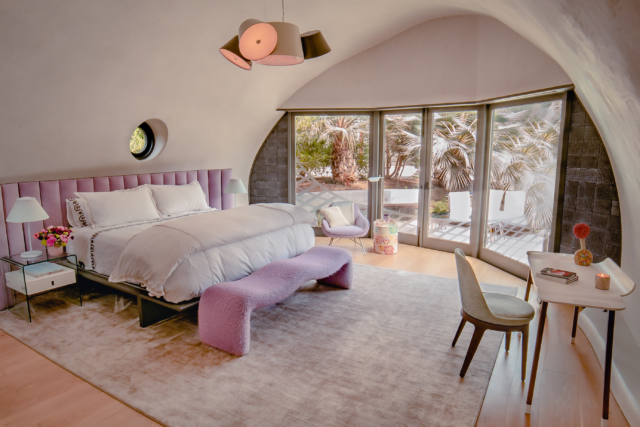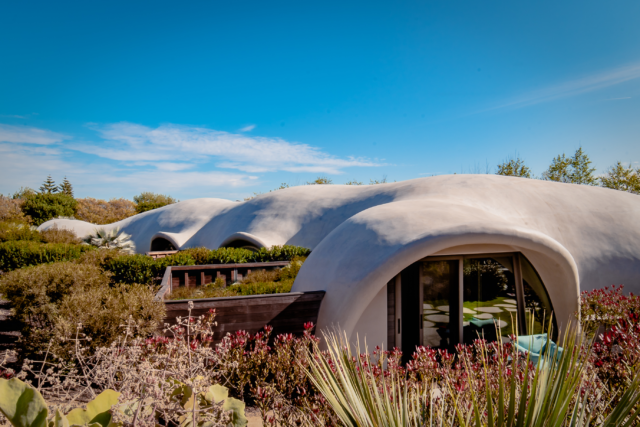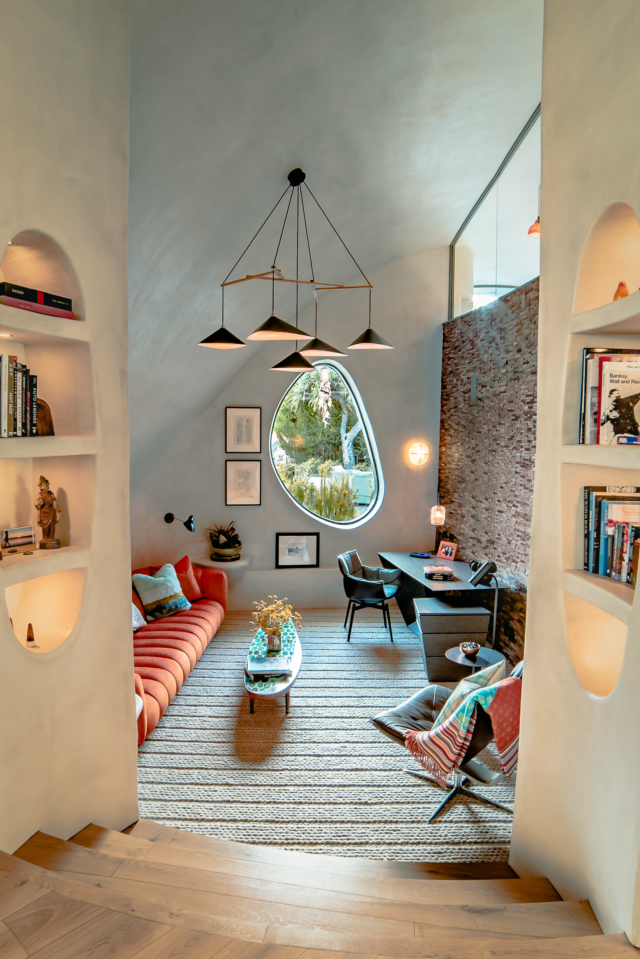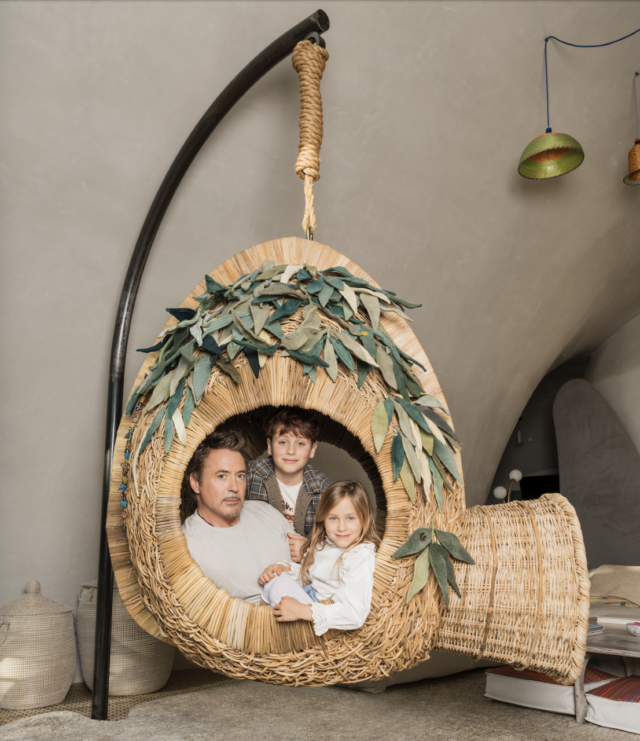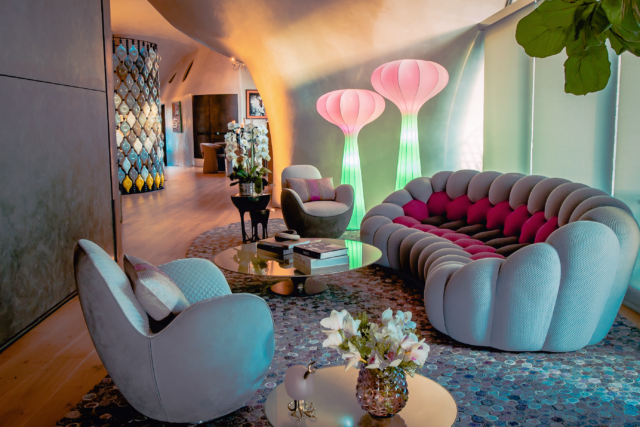
Robert Downey Jr. and his wife Susan are co-founders of the Footprint Coalition, promoting sustainable tech through awareness, VC funding, and grants. Inspired by their 7-acre Malibu homestead, featuring advanced wind turbines and solar water systems, they’re leading a shift towards eco-friendly living. The unique Binishell structure, resembling a three-headed turtle shell, embodies their bold approach to sustainable architecture.
AG: When did you buy the property in Malibu?
Susan Downey: First things first, we should partly credit you for embracing home design innovation. Your book Spaced Out was one of several sources of courage. We bought the property in 2009 as three contiguous parcels. We did very little to the main house. Our first designer was Robert Clydesdale. We love him and his elevated, eclectic taste. Three years later, when we were thinking of building an ancillary structure, he came to us excitedly and said, “I’m telling you- Nicolò Bini is the right architect.”
AG: Did you interview other architects in sustainable home design before settling on Nicolò?
RDJ: Several. None of whom, obviously, proposed anything like Nic’s method. He introduced us to the technology that his father, Dante Bini, had developed in Italy in the late ’60s. The outer form is created using large inflatable bladders that are covered in concrete.
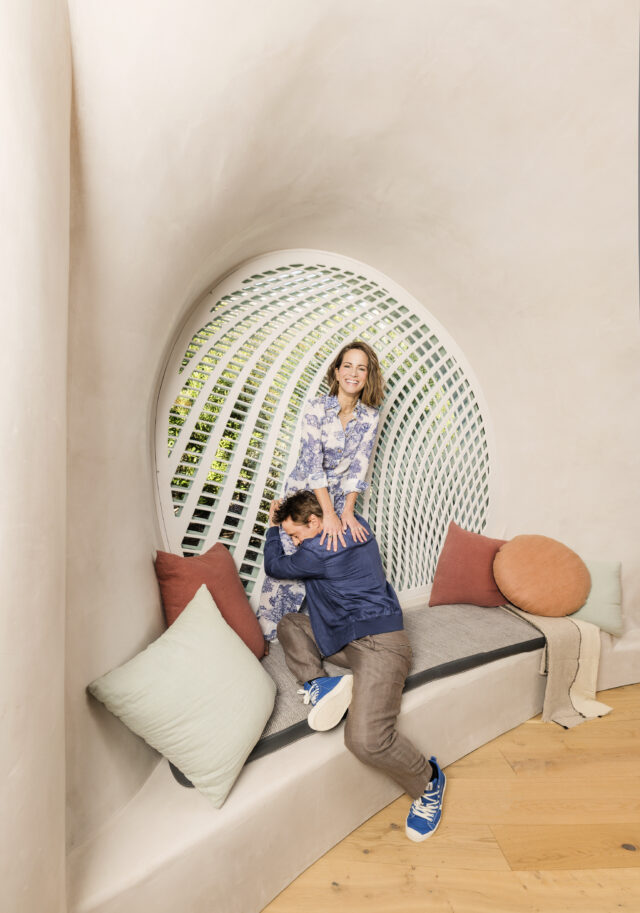

AG: The design is the same free-form as those alternative structures of the 1960s and 1970s: geodesic domes, biomorphic shelters and womb rooms that the hippie counterculture embraced as a revolt against the tyranny of the same square and straight lines. Even though it’s kind of retro, your house seems like a radical design for today. Were you inspired by that earlier period of experimentation in sustainable home design or was it something else?
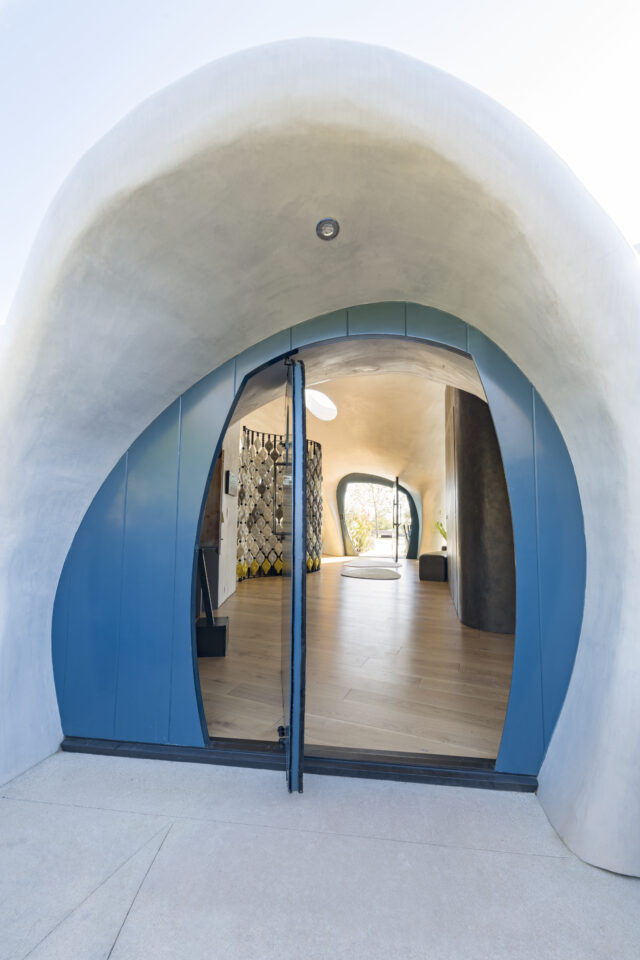
AG: Your house evokes the traditions of 20th-century utopian design, but there’s also something cartoonish about the convergence between German Expressionism (I think of Erich Mendelsohn), Hobbit huts and Teletubbies barrows—especially in those thick-lipped portals that appear to gape and pout in exaggerated pantomime.
SD: That was really one of the balancing tricks: how to find items that worked in harmony with this unique structure without falling into parody. Never gilding the lily or having it look like Fred Flintstone’s house.
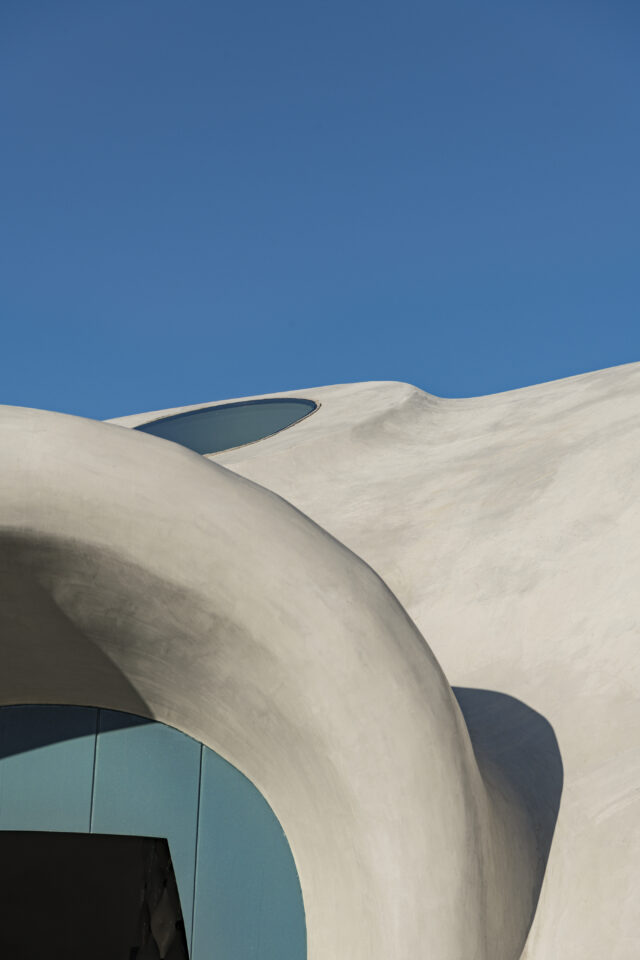
AG: Well, it may not be parody, as you say, but you’re certainly surfing along the edge of something that could be considered ironic. Can you walk us through some of the interior spaces?
RDJ: Right through the entry door there’s this architectural bead screen. It’s the first thing you see when you walk in.
AG: It looks like it’s made from gray and brown ceramic elements.
SD: Like Robert was just saying…budget. We opted out of the ceramic price point. These are custom-designed fiberglass beads by Fox-Nahem that Joe Nahem commissioned from an artisan in Mexico.
